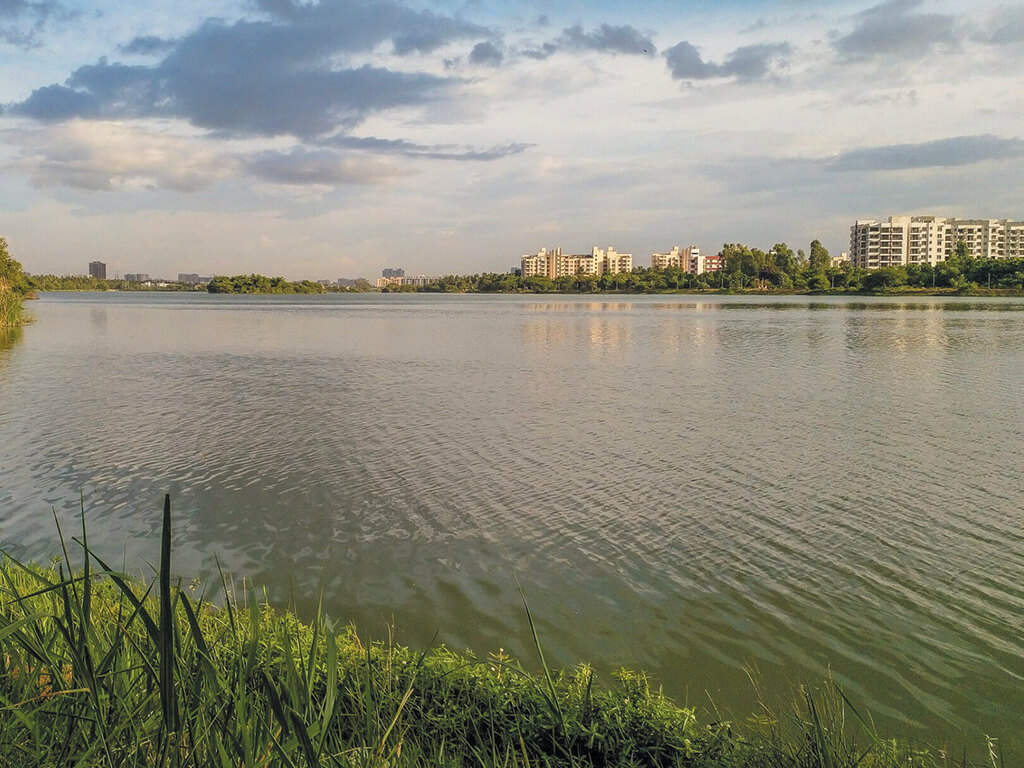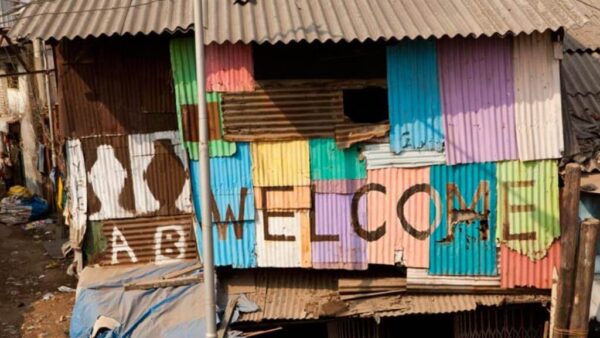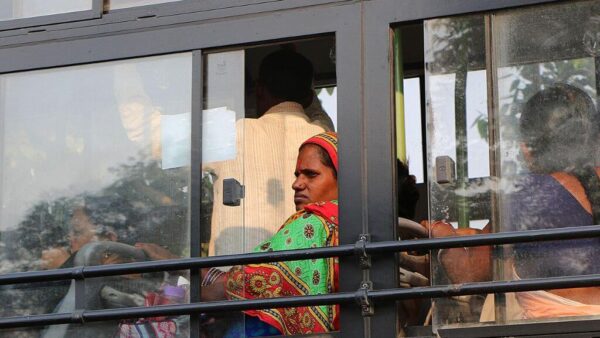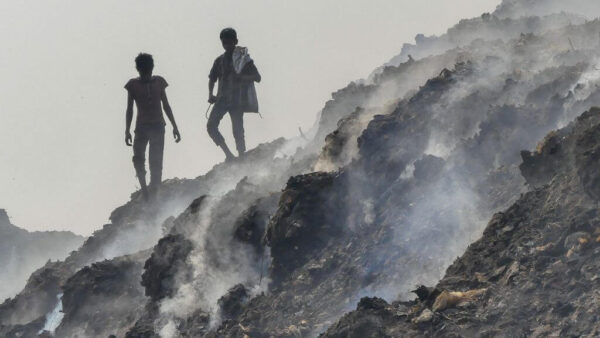The morning rush hours, usually a challenge in any home, become even more so in neighbourhoods across Bengaluru as the city grapples with severe water shortages this summer. Hot mornings without water are “downright soul-crushing” for 38-year-old Kala and other women of Krishnaiyyanapalya, a modest neighbourhood in East Bengaluru. The low-income families and public institutions like schools and hospitals are on the edge every day – and see no succour except to struggle.
Krishnaiyyanapalya is an older and more urbanised locality, compared to the 110 urban villages in the periphery of Bengaluru. It is located close to posher areas like Indiranagar. Houses here are smaller floor apartments unlike the large independent bungalows of Indiranagar or the gated communities spread across the peripheral areas of Bengaluru. Residents predominantly from lower-middle class and low-income households.
In times of water shortage, this impacts how much water a family gets because, though tanker water may be available, it can be unaffordable for many. Large parts of Bengaluru’s new and posh peripheral areas, all without piped water supply, rely on borewells or tankers for their daily supply. However, Krishnaiyyanapalya gets piped water from the Cauvery, but this summer the piped water has become erratic and inadequate to meet their needs.
Bathing every day has become a luxury, women here tell me. They are part of a self-help group facilitated by an NGO, Association for Promoting Social Action (APSA). Prabha, a field worker from APSA, connected me with them. “We haven’t had running water the entire day,” says Kala, at around 3 pm when we meet. The inability to bathe weighs on their minds. Bhavani, in her thirties, says, “Cauvery water, in the past, would be released for at least an hour every day. Now, it is released for 20 minutes at the most and even that is a trickle. There is no choice but to try for tractors.” As the meagre water supply from the river trickled out, their struggles intensified.
Most families here have four-five members. With four-five families in each building served by one 6,000-litre tanker, each family could end up spending approximately Rs 300 a day for their water – a huge bill every month for those with modest incomes. This is if they can get a tanker. With demand for tankers soaring, there is a long wait for tankers. Reports suggest that per-capita consumption in Bengaluru is ~135 litres for middle-class families[1]
Unaffordable tankers
Neighbourhoods that do not have enough piped water, especially in the newly expanded peripheral areas, rely on borewells or tankers and tractors. These bring groundwater from where it is available to neighbourhoods like Krishnaiyyanapalya. Amidst a growing clamour that they were exorbitantly priced and taking undue advantage of the water shortage, the Karnataka government recently passed an order to cap tanker prices.
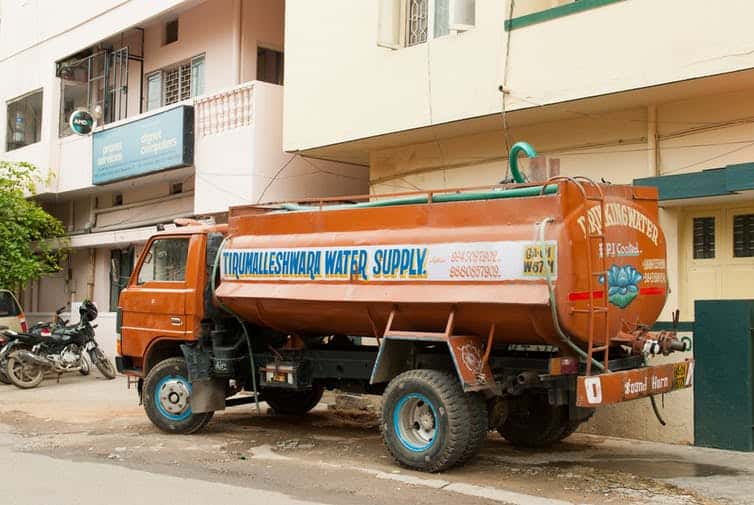
Photo: Ajay Bhaskar/Shutterstock
According to the mandate, a 12,000-litre tanker supplying water within a 5-kilometre radius of its source can charge up to Rs 1,000 which can be increased to Rs 1,200 when the radius is extended to 10 kilometres. Tankers carrying 6,000 litres can charge up to Rs 600 within the 5-kilometre delivery radius and a maximum of Rs 750 for delivery beyond that. Even if this appears reasonable under the severe shortage circumstances, the people and institutions I spoke to in Krishnaiyyanapalya affirm that these pricing rules are not followed by suppliers. It is the same in other areas of Bengaluru too that are served by tankers.
In Krishnaiyyanapalya, the price is roughly twice the government norm. A 6,000-litre tanker cost Rs 1,200. One tanker or tractor is usually shared by a handful of families which too hardly lasts a day, according to the women here. “Even if we are willing to pay, the tractors don’t come. We have to call them continuously for a couple of days to get water once,” says Ratna. If this is our condition, how can the poor living in tin houses afford any water, wonders Kala.
No water to wash, women sacrifice
There are water tensions in homes now. On the day we met, Kala’s family woke up to a home without water. Her husband, a social worker, and a child each in school and college, wondered how they would get ready while Kala fretted about cooking. “My husband rushed to buy two RO water cans. Everyone got two mugs of water to wash their face and get ready. I also had to make breakfast and lunch with the little available and washed my hands only occasionally.”
Kala’s daughter, in the midst of her school board examination, was the most upset. “After waking up early and studying, she wanted to be fresh for the exam in the afternoon but I couldn’t do anything. She left cranky and irritable. Moodu out aag bittide (our moods were ruined),” says Kala. Dirty dishes and clothes must wait until Cauvery water is released that night or a tractor makes its way to Krishnaiyyanapalya.
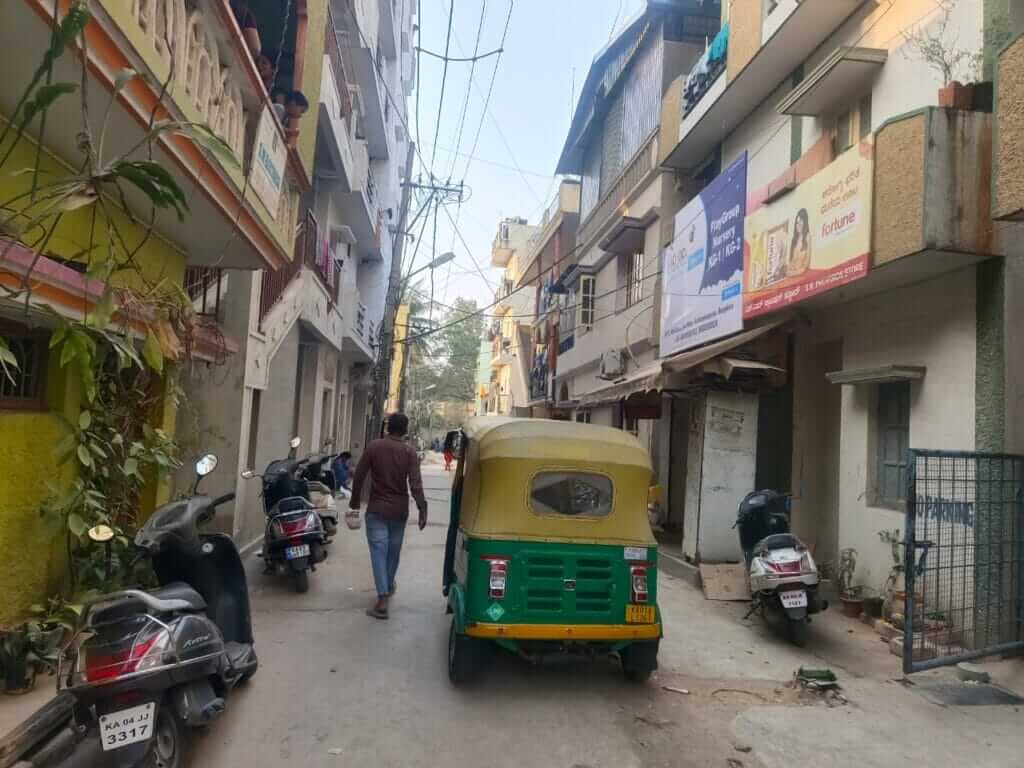
Photo: Prabha
The burden of managing homes in the face of such scarcity inevitably falls on women – and calls for them to sacrifice. They are last in turn for a bath, their clothes are the last to be cleaned. Bhavani has taken to bathing every alternate day while Ratna says she has gone without a bath for four days. This can be unhygienic in the high summer heat. The India Meteorological Department has predicted[2] a hotter summer in Bengaluru compared to previous years.
During menstruation, the women have it worse. “It’s a time when you want to wash more frequently and drink lots of water, but we can’t afford to. I don’t know how young girls are going to manage,” says Kala. The APSA field worker Prabha says that she faces the same set of problems in her home in KR Puram. Unlike Krishnaiyyanapalya, KR Puram relies on groundwater supplied by the local gram panchayat. “The supply used to be very good,” recalls Prabha but the borewell is apparently running dry. She learned from an official it was dry even at 1,500 feet deep but I could not independently verify this.
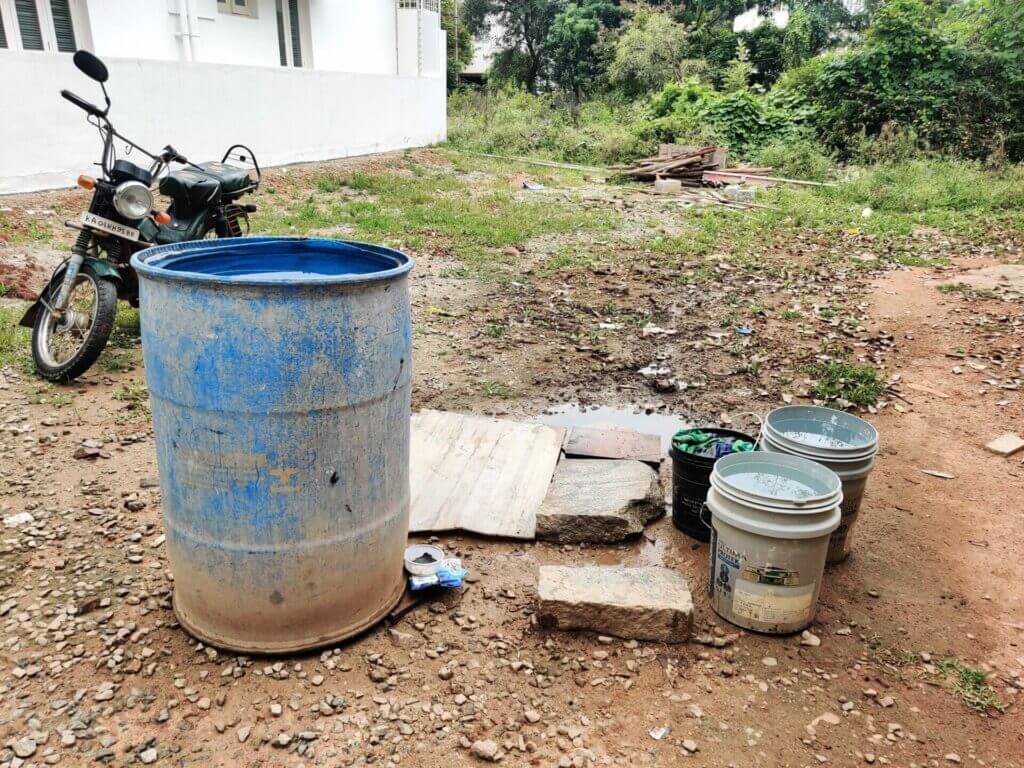
Photo: Bhanu S
All the women I spoke to said that government officials were nowhere to be seen. “We tried contacting the Bangalore Water Supply and Sewerage Board (BWSSB) about the Cauvery water supply but they just tell us that there is no water to release,” says Kala. The Bruhat Bengaluru Mahanagar Palike officials have not visited the neighbourhood nor have elected representatives. Krishnaiyyanapalya is part of the CV Raman Nagar assembly constituency;[3] the BJP’s S Raghu is the MLA and PC Mohan is the MP of the Central Bengaluru Lok Sabha constituency “Everybody comes during elections, no one cares otherwise,” says Bhavani.
None of the women knew about designated BBMP nodal officials[4] for each ward in the city. I tried contacting the nodal officers for the Krishnaiyyanapalya ward that the women lived in but could not get through. The women said this was the first time that they experienced a prolonged water shortage; there would be a couple of days of low supply from the Cauvery in the past and they used tankers once or twice in a summer. In fact, Kala says that her family moved to the current locality because she had heard it had better water supply compared to her previous home. Prabha said she did not recall a water shortage in KR Puram in the past.
Schools, hospitals on the edge
The water shortage has impacted public institutions like schools and hospitals across Bengaluru. In Thanisandra, in North Bengaluru, one of the 110 urban villages with no connection to the Cauvery supply, the Inspire Public School administrator says that they are forced to be extremely careful with water usage. “Typically, we manage with groundwater but this year our borewell went dry by February,” says Neha.
The school comprising 300 students now depends on tankers which are ordered once in two days. The 6,000 litre tankers cost approximately Rs 1,500 but tanker owners charge more, explains Neha. The tankers have to be ordered well in advance but the supply still gets delayed occasionally. “We cannot run out of water in washrooms. With these many students, it would be a mess,” she says.
At Jai Bharat English School in Hegde Nagar, also in North Bengaluru, school administrator Chetan Kumar says that the students have been instructed to carry spoons to eat their meals, so the water used to wash hands can be saved. “If students have any water left in their bottles at the end of the day, we ask them to water a plant on the campus,” he adds.
Meanwhile, school authorities have stopped all non-essential services such as washing grounds, school vans, even daily watering of plants. “Our landscaping is expensive. We are trying to reduce watering plants, but if they die it will be expensive to replace them,” says Neha. Summer holidays will bring a small sigh of relief.
Hospitals in these areas, which have to run round the clock through the summer too, are worried. The borewell in Sai Hospital in Hegde Nagar ran dry a month back forcing the hospital to use nearly 10 tankers a day since. Though the hospital is relatively small, with eight doctors and 40-50 outpatients a day, its water needs are significant.
“We need to keep our toilets and the hospital premises spotless which means cleaning multiple times a day,” says an administrator who did not wish to be named. “The staff uses water just to wash their hands and scrub up before and after patient examinations,” he says.
The schools and the hospital pointed out that tanker prices have more than doubled since February. “We have no choice but to agree to the rates,” says the hospital administrator. “If we run out of water it will be worse.”
Prabha, the field worker, feels that the crisis has a small silver lining. “People are more aware of the importance of protecting trees and lakes…where I live, they are talking about saving the Yelle Mellapa Shetty lake[5] and planting more trees,” she says.
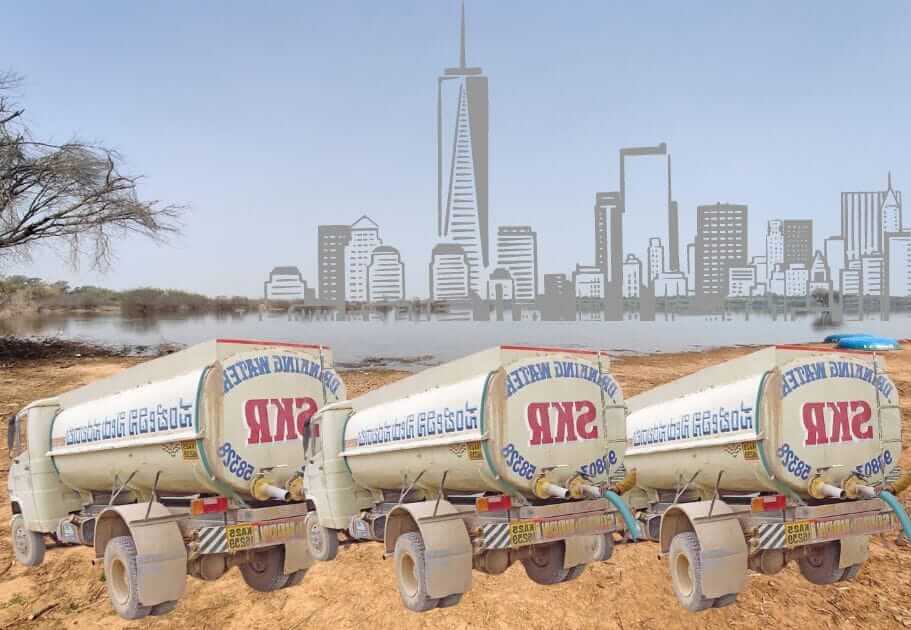
Photo: Sankar C G, Visual: Bhanu S
How did we get here?
Though most of the city suffers from water shortage, it is particularly acute in certain neighbourhoods. Bengaluru has two main sources of water: Groundwater and Cauvery River. Nearly 50 percent of the supply is from groundwater and the rest from the river, according to this Water Balance report.[6] It appears that authorities sanctioned building plans merely on the assurances of developers or contractors who responded to questions about water supply with “self” or “Cauvery water expected”.
The groundwater, used for domestic, commercial and industrial activities, is affected by climate and rainfall patterns. Bengaluru’s rainfall has been steadily increasing over the past few decades. The average annual rainfall has increased from 900 millimetres in the 1900s to around 1,200 millimetres in the 2000s; it has been over that since 2020. But the increased rainwater does not percolate into the ground due to heavy concretisation across the city. While more groundwater is extracted to meet the increasing demand, lakes which help recharge the groundwater have been built upon. Besides, there has been an inadequate implementation of rainwater harvesting.[7]
Though the city received 1,957mm of rainfall in 2022 – the highest in 122 years – leading to the floods, last year was an El Nino year[8] which typically results in low rainfall. The city, as the rest of Karnataka, was in deficit. It did not affect Bengaluru as much last year because the aquifers were relatively full from the 2022 rainfall. But the groundwater supply dropped[9] by early 2024 and the Cauvery water reservoirs are low[10] too because of poor rainfall and loss of forest cover[11] in the region. Together, this has led to an acute water shortage in the city.
This is particularly felt in peripheral areas like Mahadevapura, Yelahanka and Bommanahalli where residents are dependent on groundwater. However, as this story shows, even areas with Cauvery water supply are struggling.
This article has been based on a ground report published on Citizen Matters, an independent civic media focused on urban issues.
Cover photo: People are waking up to the importance of lakes and other natural spaces to safeguard water resources. Credit: by Mike Prince

